Are you looking to make a great impression with a formal business inquiry? Crafting the perfect letter can open doors and establish valuable connections, but it's crucial to get the tone and structure just right. This guide will provide you with a polished letter template that not only conveys professionalism but also engages the recipient effectively. So, if you're ready to draft your own compelling business inquiry, read on for insightful tips and a sample letter!
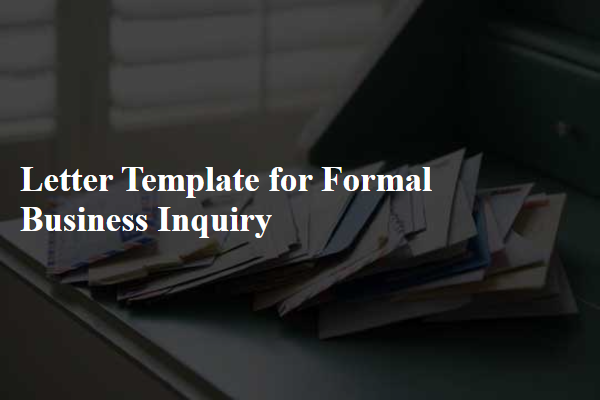
Professional tone and language
A formal business inquiry typically requires precision and a professional tone. When crafting such an inquiry, clarity is paramount, focusing on the specific information needed from the recipient. Utilize appropriate salutations and closings while maintaining a respectful and courteous voice throughout. Being concise yet informative ensures that the message is understood and that it reflects well on the sender's professional image. Key elements often include a brief introduction of the sender, a clear statement of the purpose of the inquiry, specific questions or requests for information, and a polite closing that encourages a timely response. Each component should be well-structured to facilitate easy comprehension and demonstrate professionalism in communication.
Clear subject and purpose
A formal business inquiry about supply chain management efficiency can help establish partnerships and streamline operations. Companies like XYZ Logistics in Houston, Texas, emphasize the importance of logistics efficiency to reduce operational costs by up to 20%. Understanding their strategies can provide insights into best practices and optimize supply chains. Issues such as inventory management, transportation logistics, and demand forecasting play vital roles in this process. Establishing a communication channel with XYZ Logistics could lead to potential collaborations and improved operational frameworks, enabling access to new markets and enhancing customer satisfaction.
Specific details and questions
Businesses often rely on meticulous documentation when making inquiries about products or services. A formal business inquiry may start with the specific company name, such as XYZ Corporation, and include critical questions about their product lineup, warranty terms, or pricing structures. For example, when inquiring about software solutions, details like version compatibility (Windows 10 or macOS Monterey), integration options with existing systems, and customer support availability (24/7 helpline or ticket-based support) should be mentioned. Prompt responses often depend on clear questions that indicate urgency, such as asking for a timeline on implementation or a breakdown of service fees tied to various software licenses, which could significantly impact budget allocation. Additionally, providing context, such as industry standards and benchmarks relevant to the inquiry, can foster a more fruitful exchange of information between businesses.
Contact information
In a formal business inquiry, the importance of clear contact information cannot be overstated. Essential details include the sender's name, professional title, and company affiliation, along with a complete mailing address, which often comprises the street address, city, state, and postal code, assisting in geographic identification. Additionally, a phone number is vital, ideally including the area code, facilitating direct communication, while an email address ensures prompt electronic correspondence. Providing a company website URL can also enhance transparency and offer the recipient context regarding the inquiry's origin.
Polite closing and follow-up information
A formal business inquiry should always maintain a professional tone while being concise and to the point. In closing such a letter, it's crucial to express appreciation for the recipient's time and attention. A polite closing may include a phrase like "Thank you for considering my inquiry" and indicate anticipation of a prompt response. Additionally, it's important to provide follow-up information, which can include your contact details, such as a phone number or email address, and a note about your willingness to discuss further or provide additional information if necessary. This combination of courtesy and accessibility enhances the likelihood of receiving a timely and helpful response.
Letter Template For Formal Business Inquiry Samples
Letter template of formal business inquiry regarding partnership opportunities.
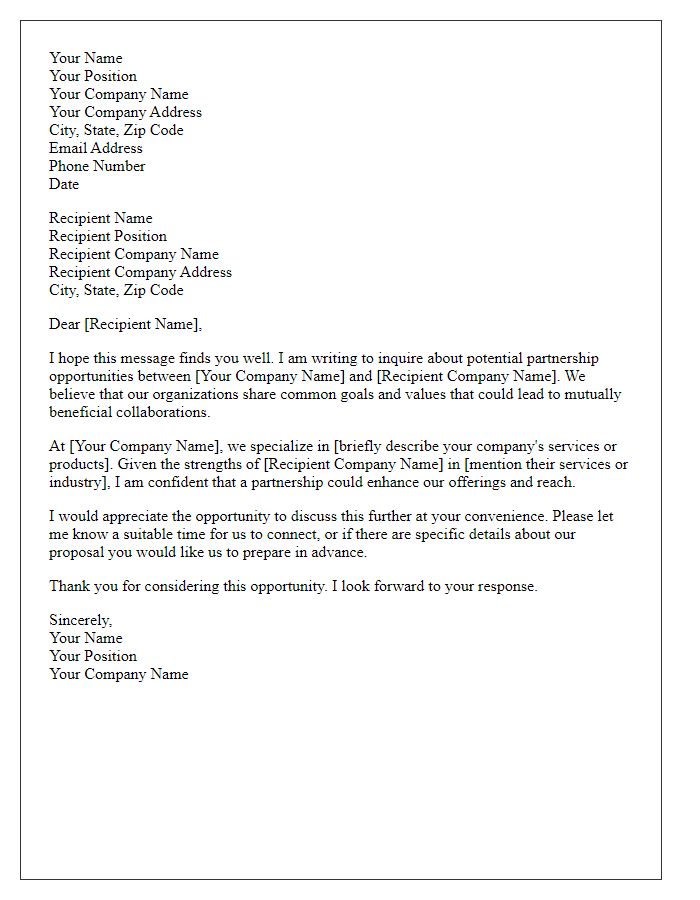
Letter template of formal business inquiry regarding customer service policies.
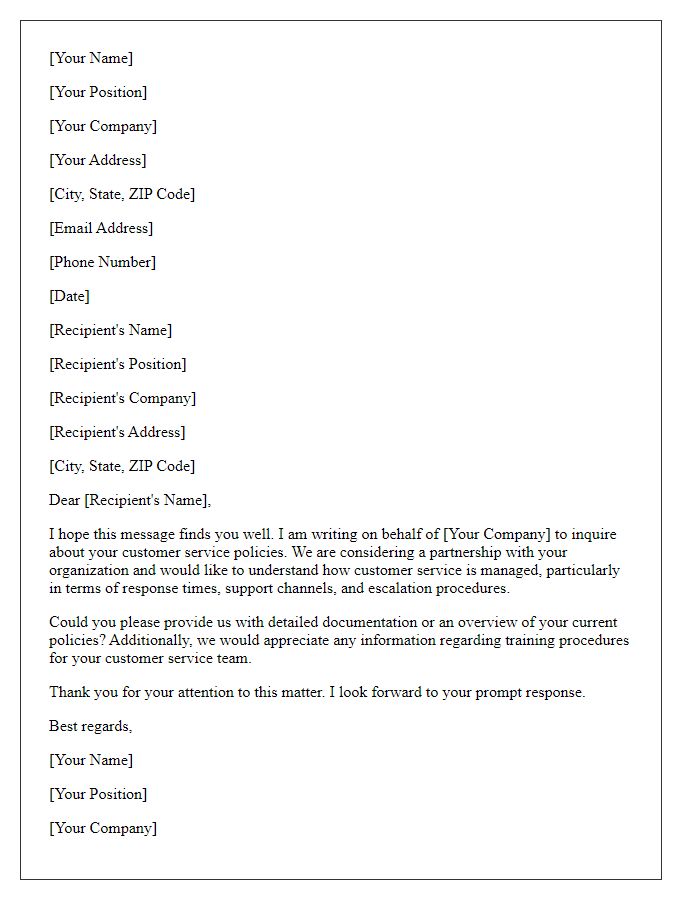
Letter template of formal business inquiry into corporate sponsorship possibilities.
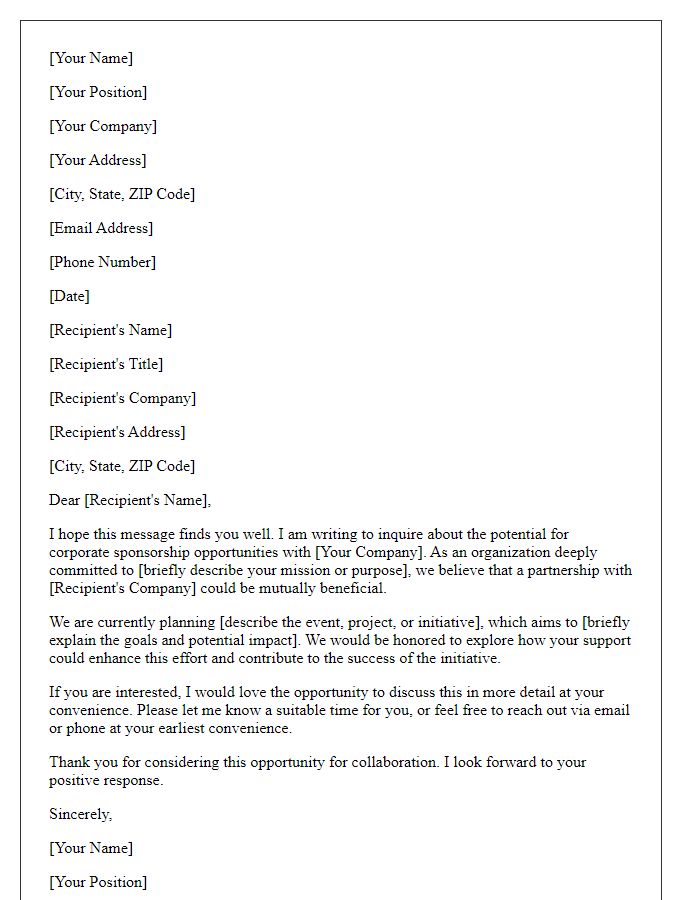

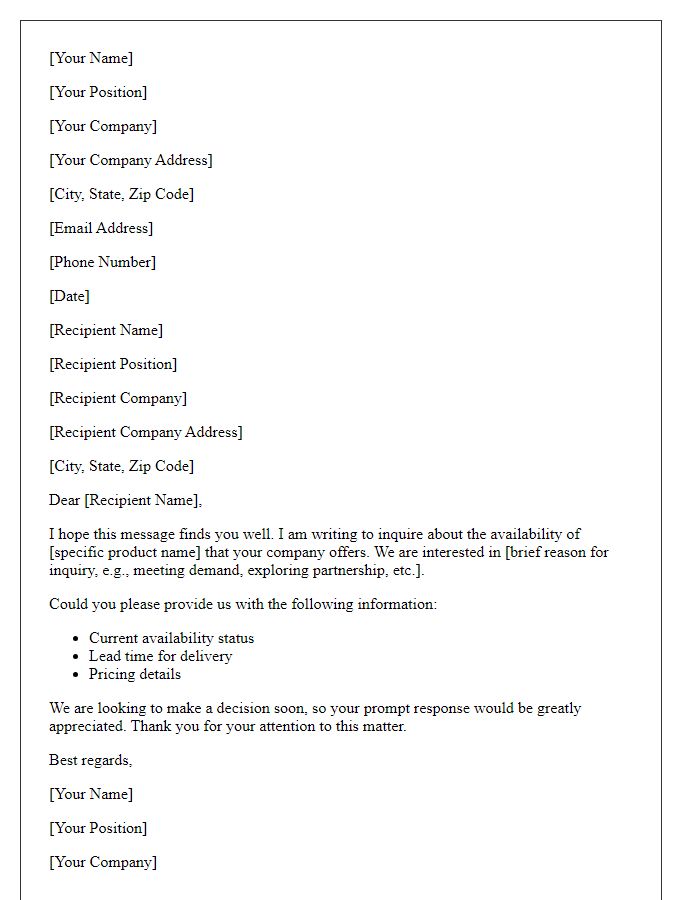
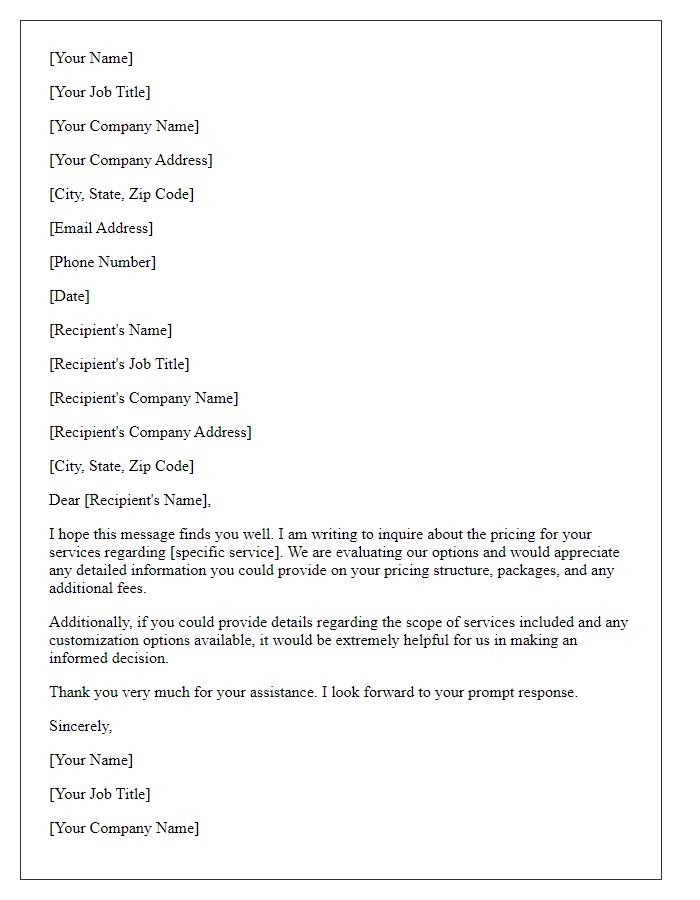
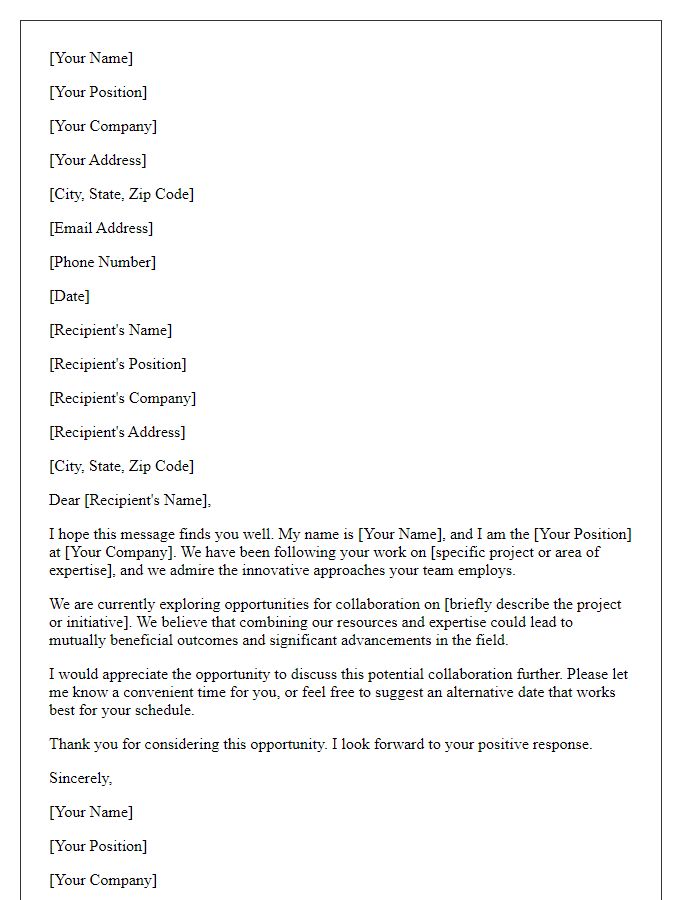
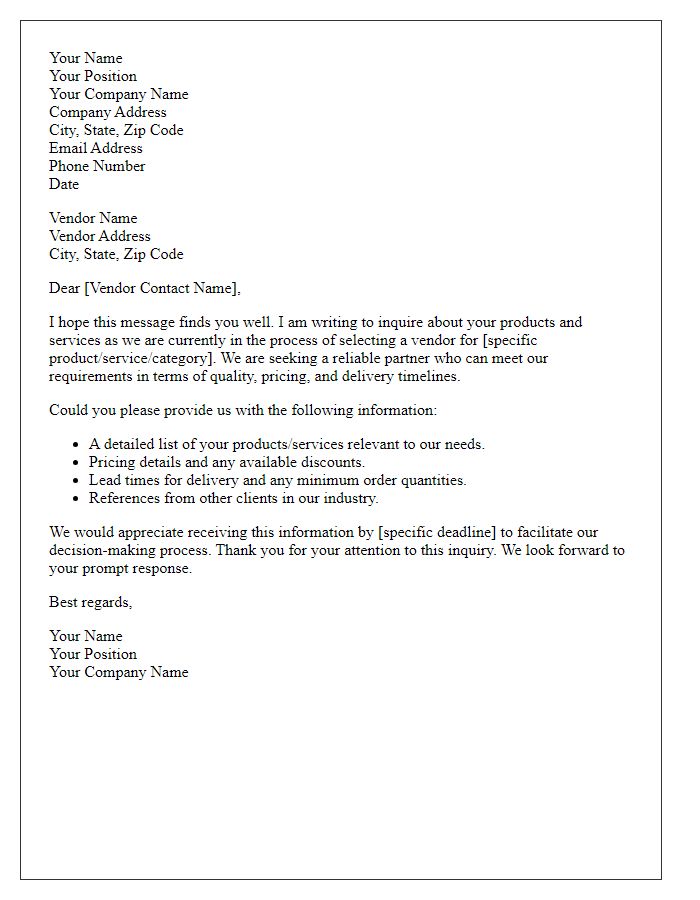
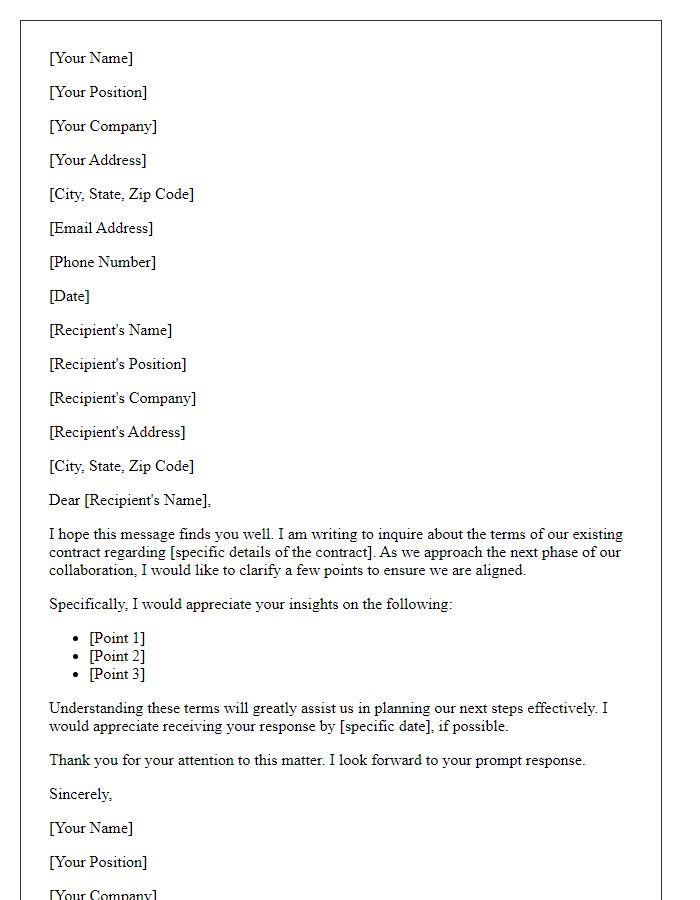
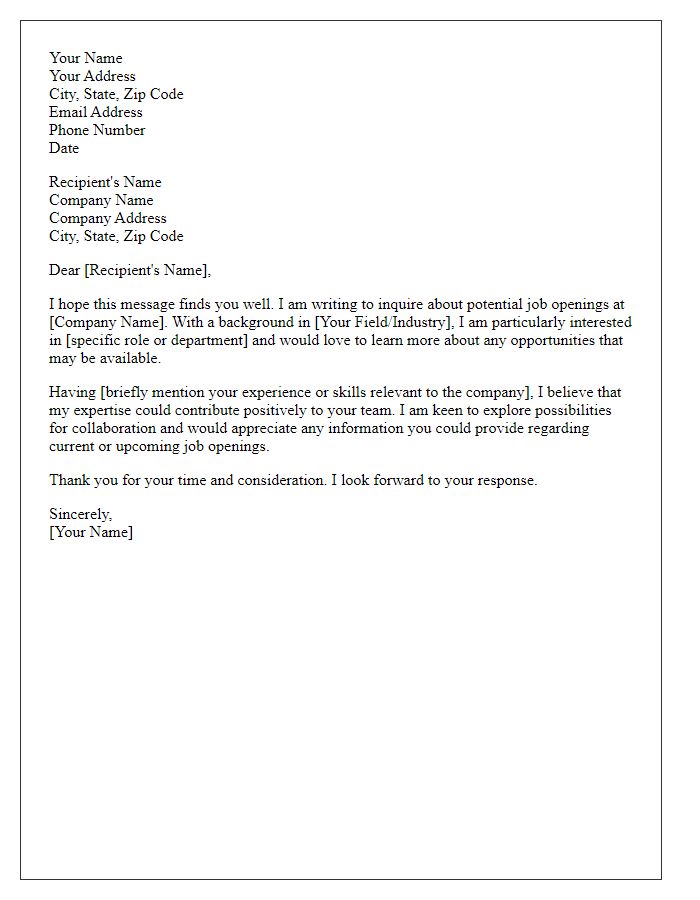
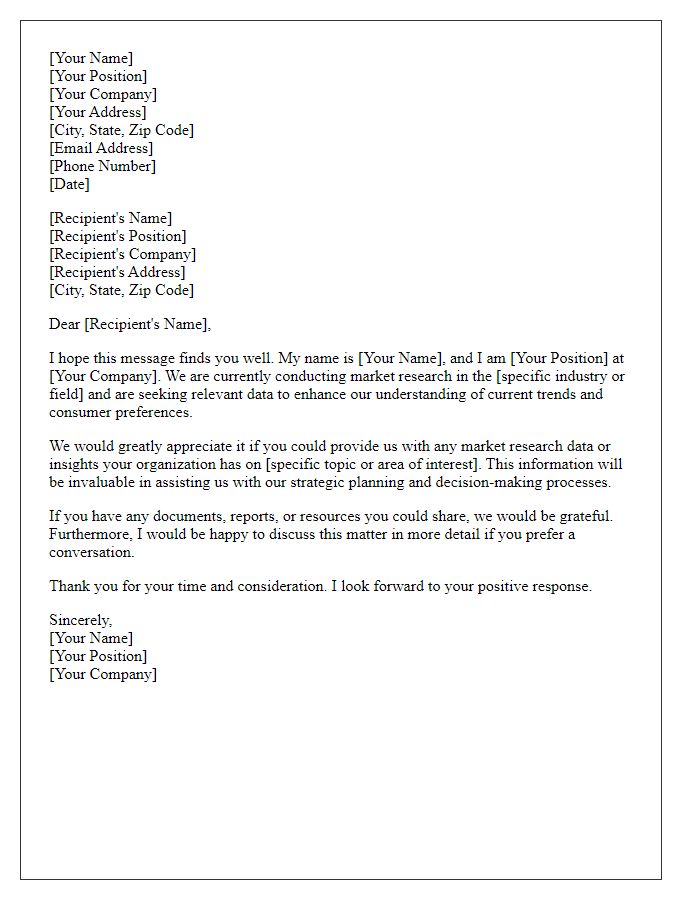


Comments